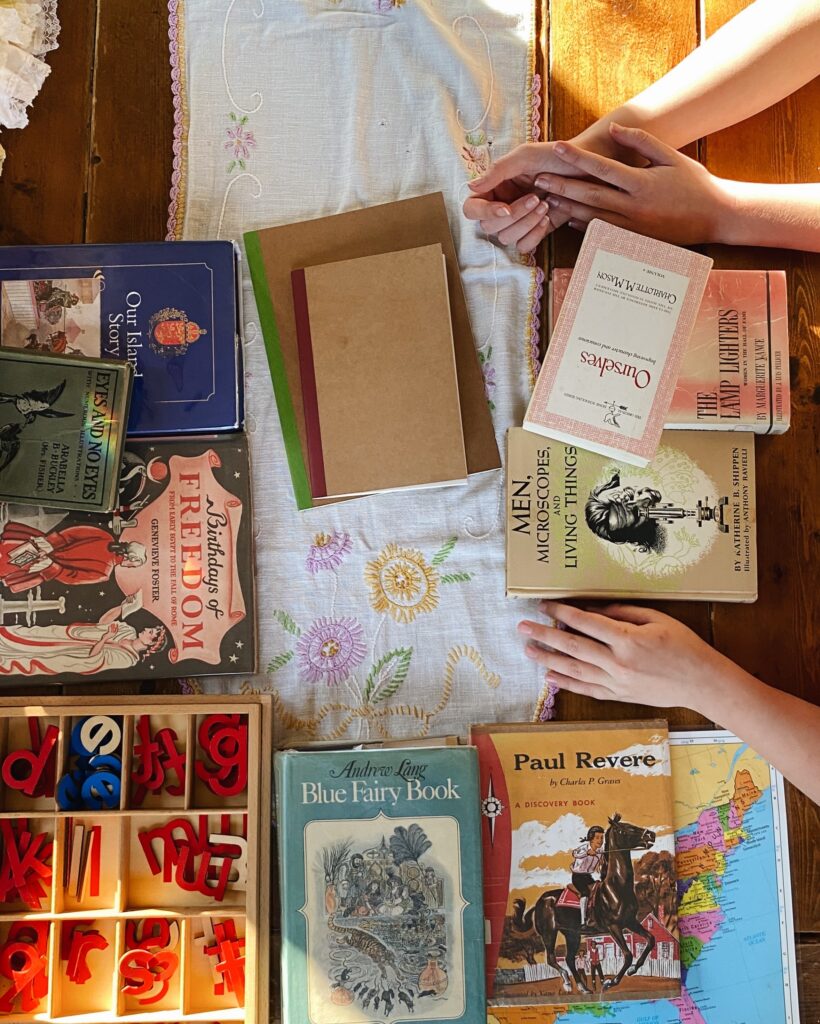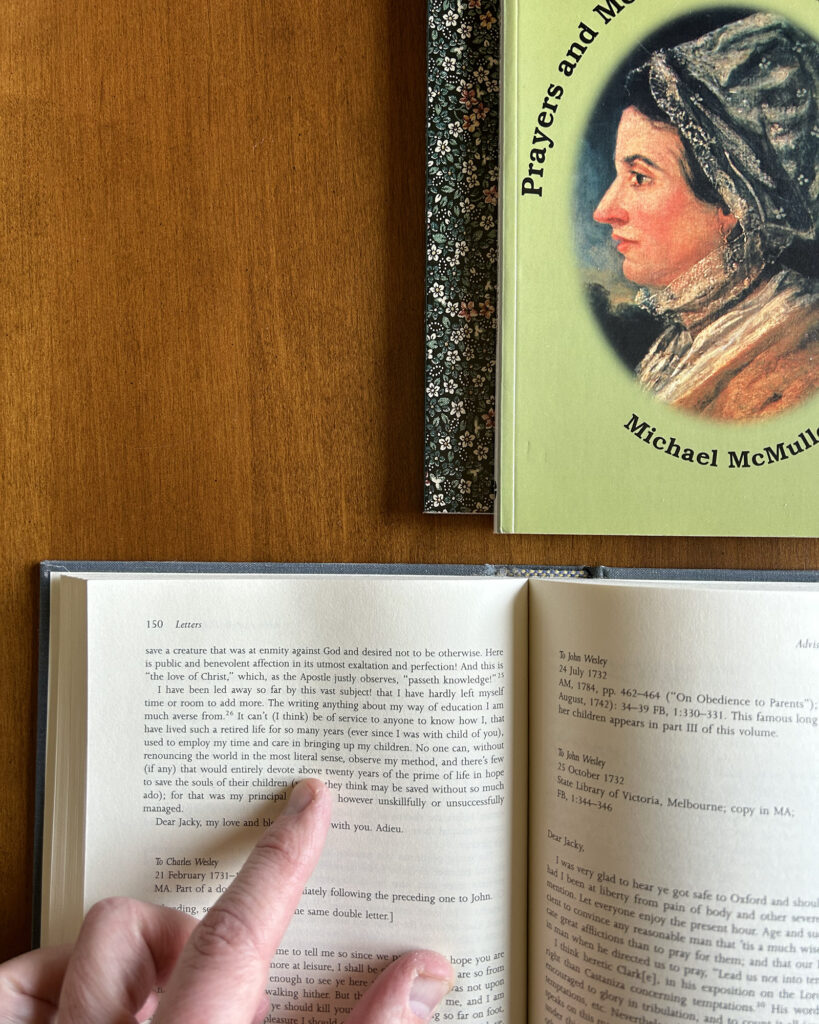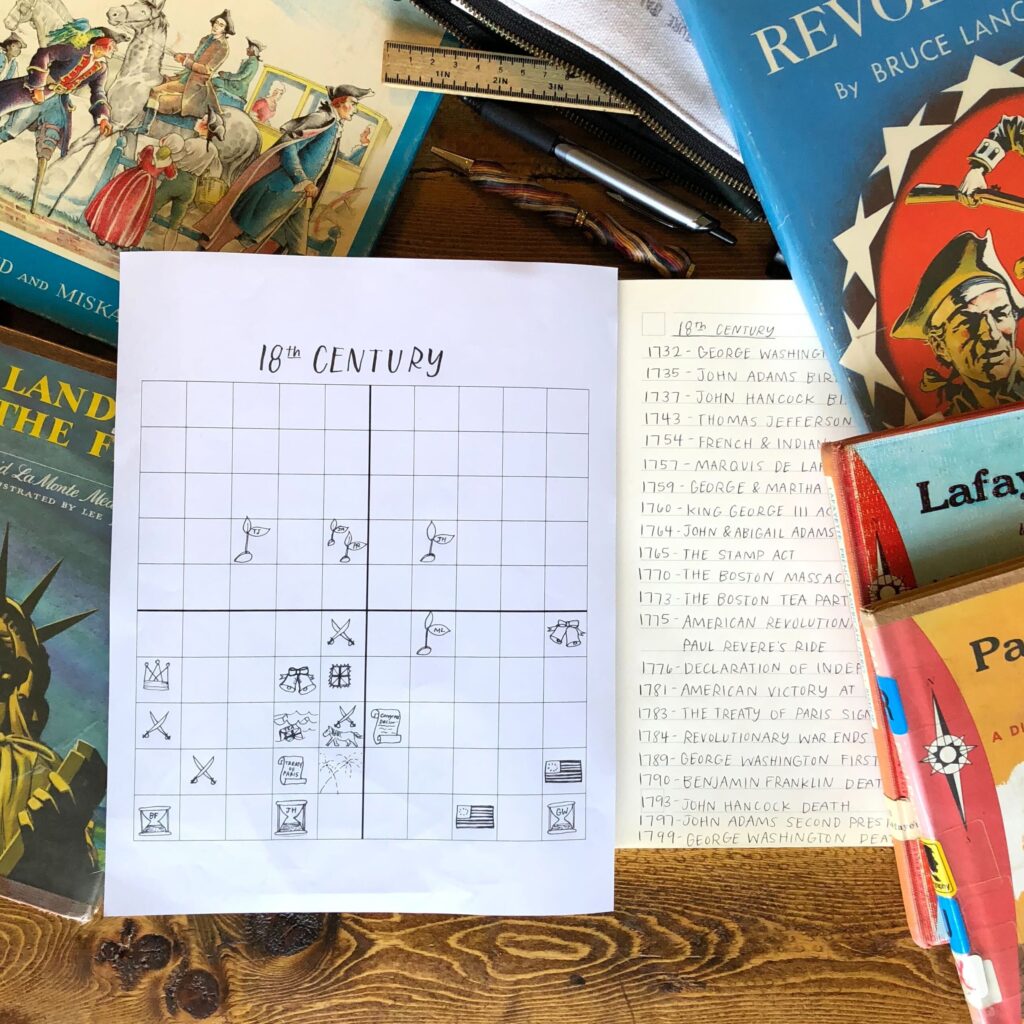The CMP Review — Week of February 19
February 19, 2024

A small simple literary tradition my family enjoys is celebrating Presidents’ Day reading George Washington’s Breakfast and eating hoecakes with 3 cups of tea. We do this every year, anytime between Presidents’ Day and George Washington’s actual birthday of February 22nd (so it’s not too late if you are looking for a new tradition to pick up 🥞☕️ ☕️ ☕️). Do you have any literary traditions your family follows throughout the year? I’d love to hear about them.
@tessakeath
February 20, 2024

When I consult with homeschool families, one challenge that often comes up is how to construct a time table when there are multiple children in different forms. The parent-teacher doesn’t want to spend the entire day from sunrise to sunset working on lessons. But then different children of different ages need different books, and who and when will their narrations be heard?
I usually end up suggesting approaches that involve children working together in groups, sometimes without the direct guidance of the parent. Sometimes I even suggest that one child listen to the narration of another. In making such suggestions, I know I am taking a risk. I know that someone might say it is not the “Mason Method.”
In the 1920s, some British schools were employing the Charlotte Mason method. They too had challenges with scale. How could one teacher be everywhere, and how could one book be shared by many children? A solution emerged that was known as the “Group System.” But a Gloucestershire Headmaster revealed that he faced the same risk: “One continually hears it said, that it is not part of the ‘Mason Method,’” he confided.
But this Gloucestershire Headmaster knew about an open secret. He knew about a special letter that only a few eyes had seen. A letter that had been quoted, studied, and applied. A letter that talked about dividing a class into groups. A letter written by Charlotte Mason herself in the twilight years of her life.
Do you teach more than one child, whether in a classroom, a co-op, or your living room? If so, read or listen to the story of the “Group System,” and find out about an approach that our Gloucestershire Headmaster said “received the approval of Miss Mason.” Find it here.
@artmiddlekauff
February 21, 2024

Book 5 of the Charlotte Mason Arithmetic Series is soon to be released—and we have a preview up on our Math Resources page!
This one is particularly exciting for a few reasons:
1) It’s being released alongside Practical Geometry, Pt. 1, written by Dr. Julie Ryle and Tabitha Wirges. It’s designed to work in tandem with Book 5, with four days given to the arithmetic lesson and one day to the hands-on geometry lesson.
2) Rather than having students memorize rules and definitions, they apply what they know to new ideas with example problems. Next, we find out from them the method of working and allow them to word “rules” on their own. This facet of the CM approach to maths shines in Book 5, as the students become like Euclid or Newton.
3) Bookmarks are back!
Take a look at what students will be discovering in Book 5 from Simply Charlotte Mason and ask any questions or guess the color of the next cover in the comments!
@rbaburina
February 22, 2024

One of my heroes of the faith is Susanna Wesley. In fact, we named our daughter after her maiden name. Her theological writings and example of courage and faith have inspired me for years. Her most lasting imprint on me, however, has been her illustration of the call to parents.
Several contributors to the Parents’ Review have testified to the cost of being a homeschooling parent. In 1930, Mrs. Brown wrote, “I have to admit that anyone who undertakes the education of her own children is taking on a whole-time job—it cannot be run as a side-line!” In 1926, M. R. wrote that “one must be content to sacrifice practically all social life and all outside work, and … there is little or no time for self-development and further study.”
But when I first sensed my call to homeschool, I did not have access yet to these helpful articles. I did, however, have the words of Susanna Wesley. And in 1731 she wrote, “No one can, without renouncing the world in the most literal sense, observe my method, and there’s few (if any) that would entirely devote above twenty years of the prime of life in hope to save the souls of their children (which they think may be saved without so much ado); for that was my principal intention, however unskillfully or unsuccessfully managed.”
Twenty years ago I took these words to heart and I set out to renounce the world for the sake of my children. However “unskillfully or unsuccessfully managed” my work has been over these decades, I do not regret that first choice I made. What I had to learn is that the method requires this literal renunciation every single day. May the Lord help me be faithful today.
@artmiddlekauff
February 23, 2024

It really is so lovely living in the snowy land of the white-tailed deer! ✨
(Thankful that my neighbour @reimermarlin could get such a great 📷 of one of our deer friends. 😍 )
@antonella.f.greco
February 24, 2024

Have you utilized Century Charts with your students? I have found them to be useful in helping my children see the big picture in the section of history we are learning about, visualizing how different events relate to each other chronologically.
We have a section on the CMP website dedicated to Notes of Lessons, which are sample lesson plans written by House of Education students when they were training to become teachers. One of those Notes of Lessons is How to Make a History Chart. Find it here.
@tessakeath
February 25, 2024

Some years ago I had the opportunity to hear a wonderful lecture by a leading expert on Jonathan Edwards. The speaker had authored several books on Edwards, so he certainly had much to say about the man. I recall at one point he even said that Edwards was the greatest theologian America ever produced.
After the lecture I approached him with a few questions. And I couldn’t resist asking, “If Edwards is the greatest American theologian, then who was the greatest theologian of all?”
The author and professor hesitated only for a moment and then said, “Thomas Aquinas.” I remember his answer whenever I think of that towering 13th-century intellect whose thinking and writing have shaped countless hearts and minds over the past 700 years.
Historican Nick Needham explained, however, that Aquinas “never finished his masterpiece of systematic theology, the Summa Theologiae, because towards the end of his life (in December 1273) he abandoned writing entirely. When asked why, he replied that everything he had written seemed like ‘a piece of straw’.”
How could the writings of this greatest theologian of all time be a likened to piece of straw? According to Needham, many believe that Aquinas had “a glorious spiritual experience … during holy communion which (he said) made his writings appear worthless in comparison with the experience.”
In today’s poem Charlotte Mason compares what we think we know about the Son of God as compared to the glorious truth. “I am the resurrection and the life,” says Christ. Do we really believe? Consider with Miss Mason here.
@artmiddlekauff